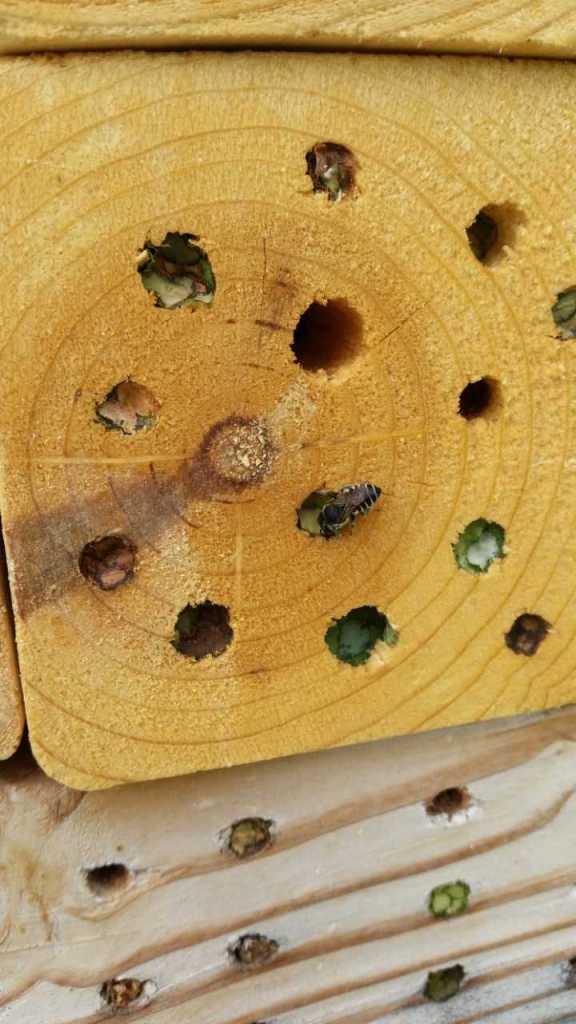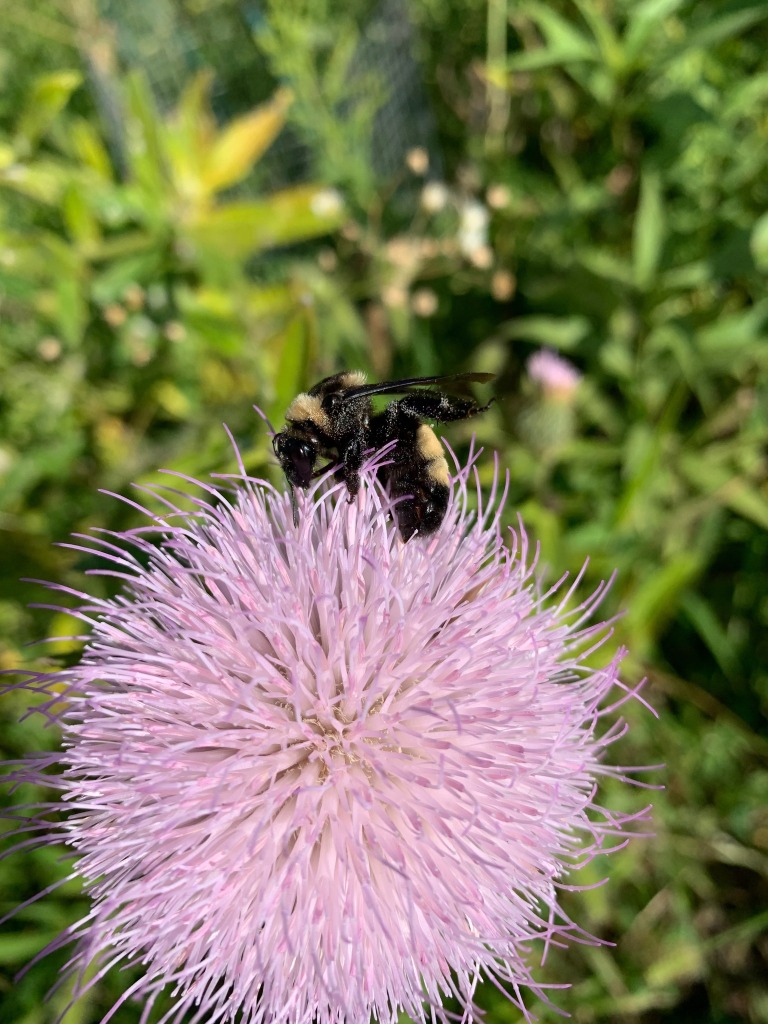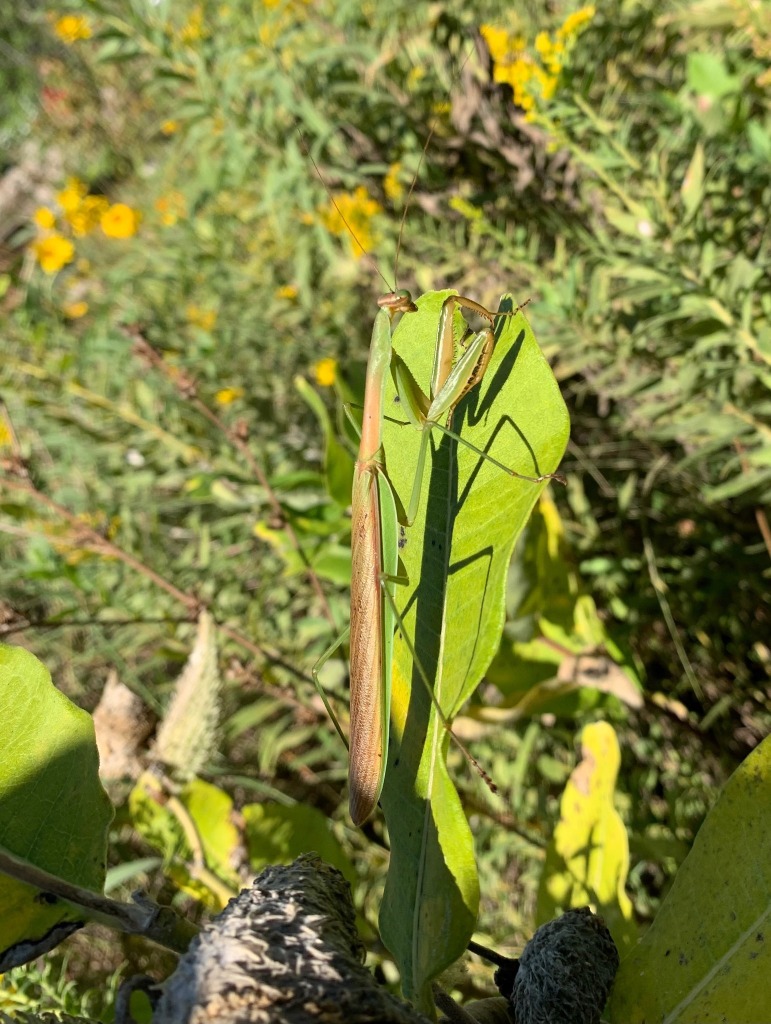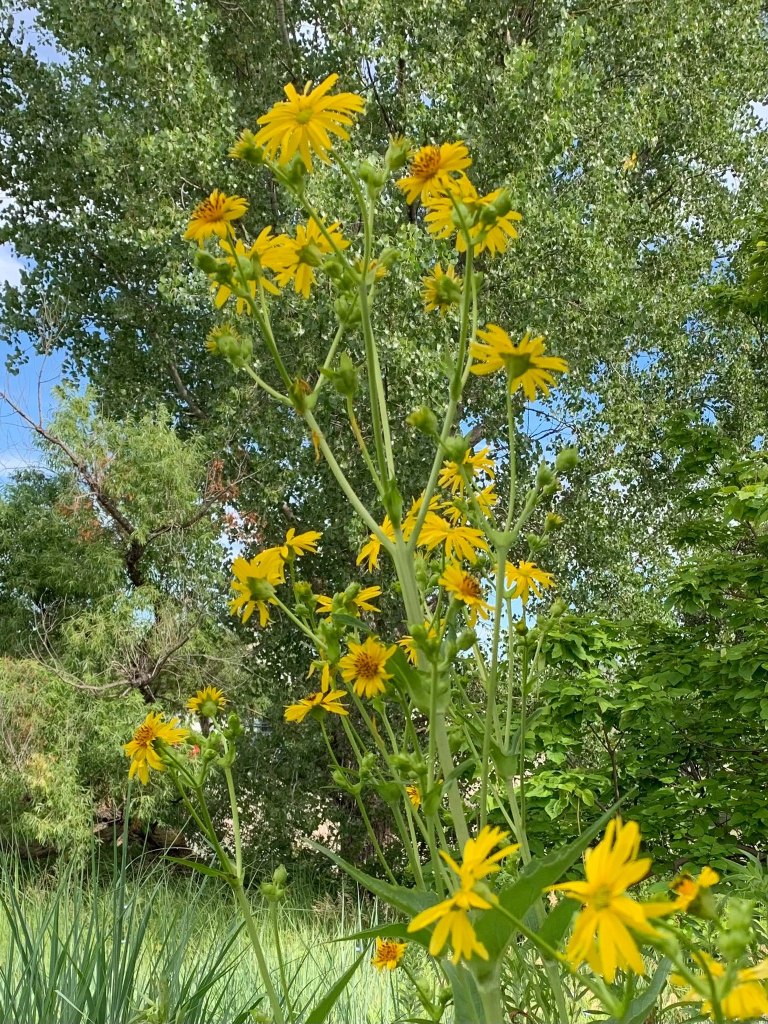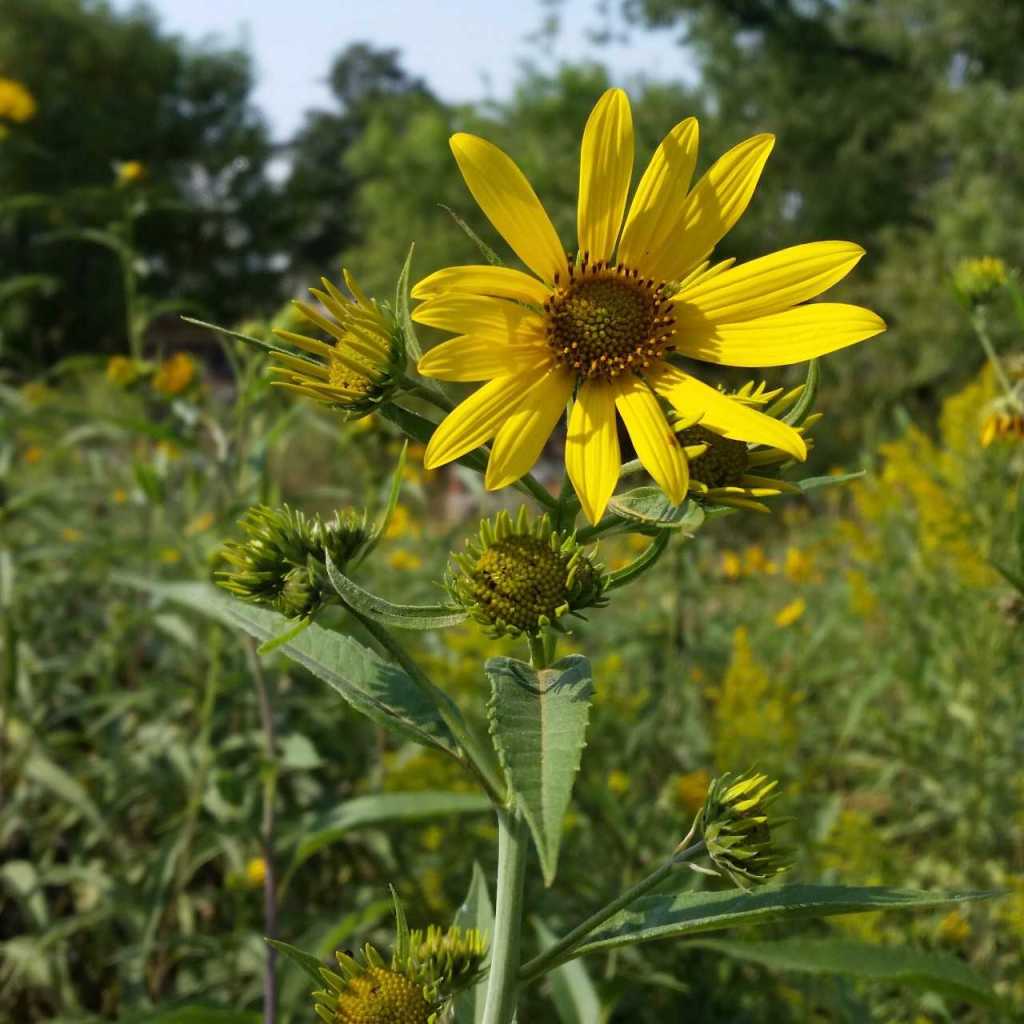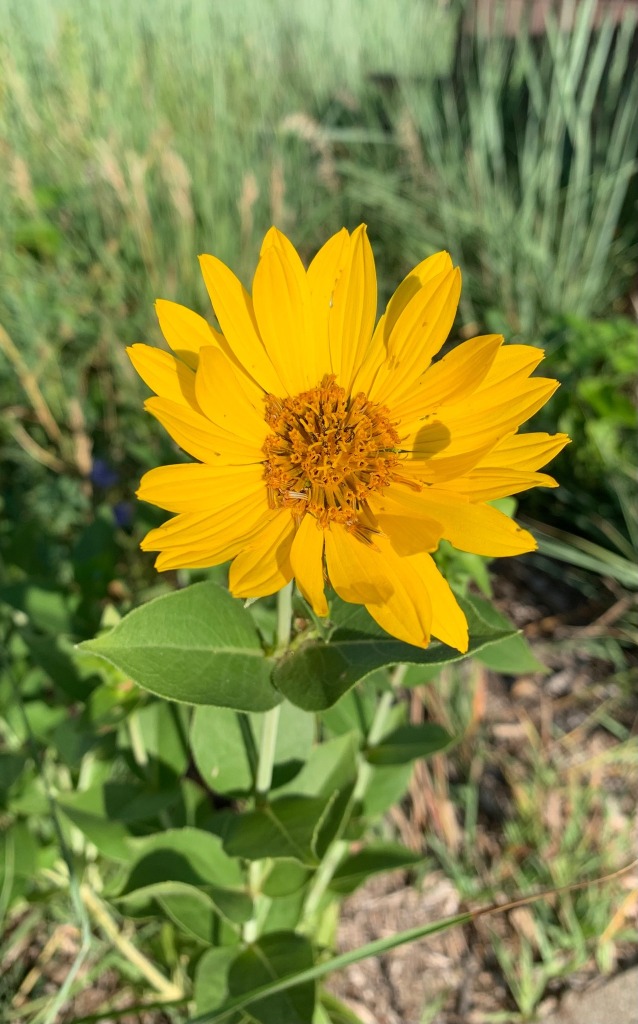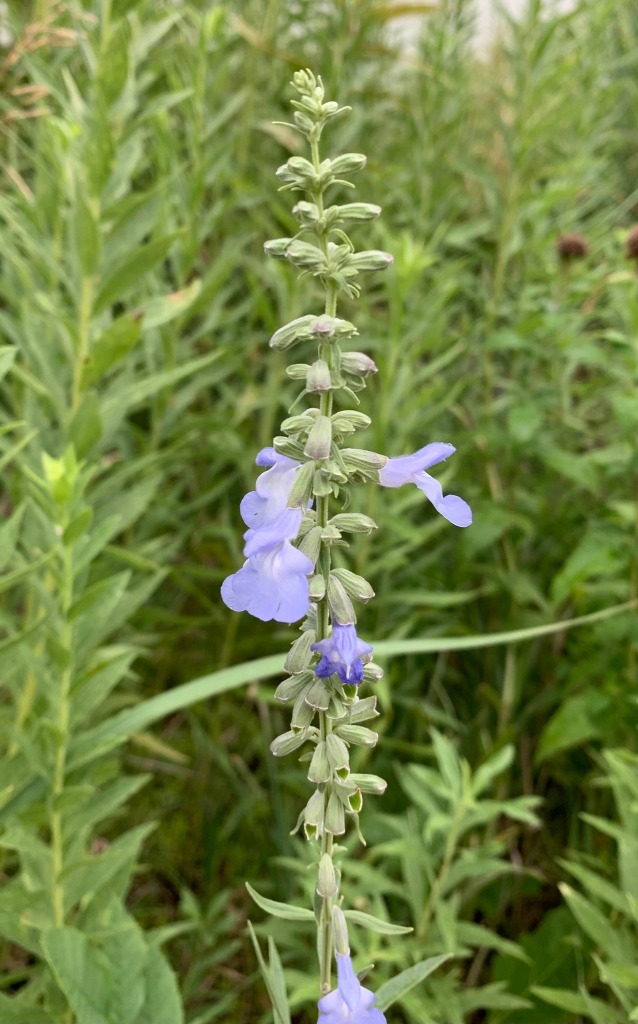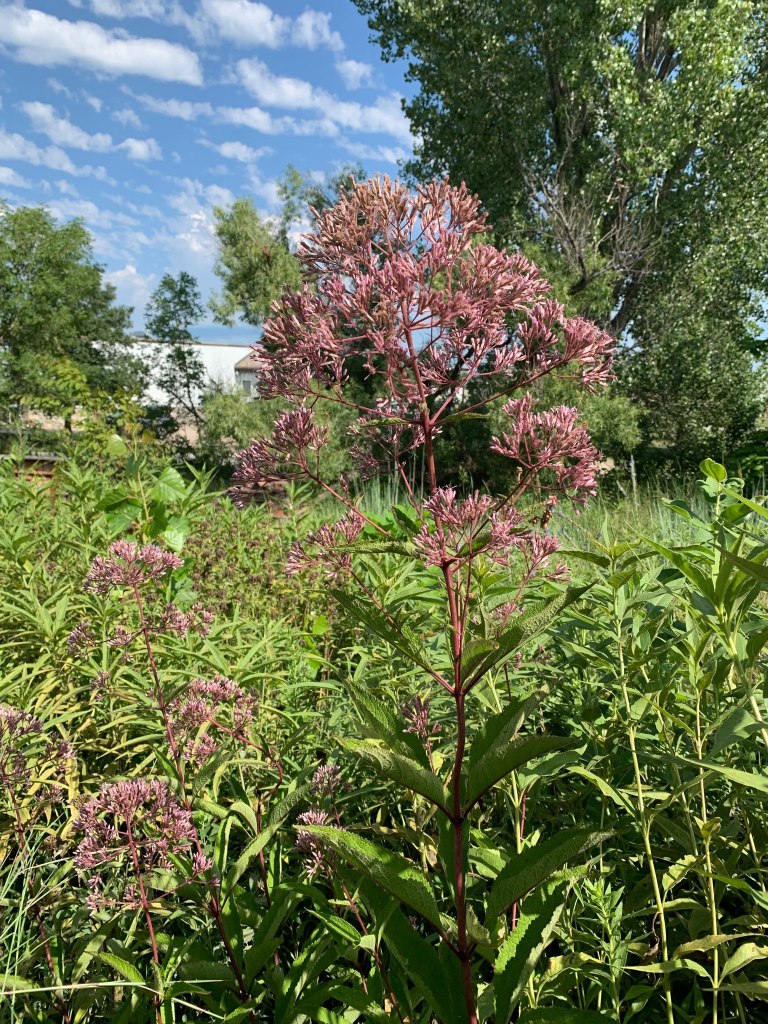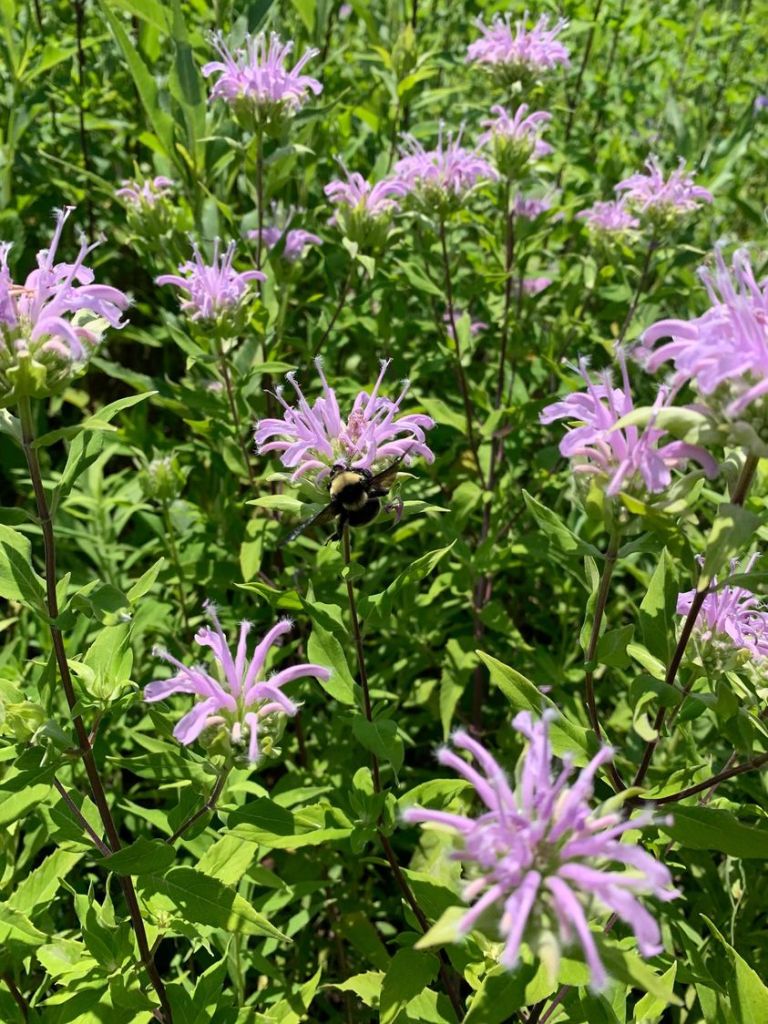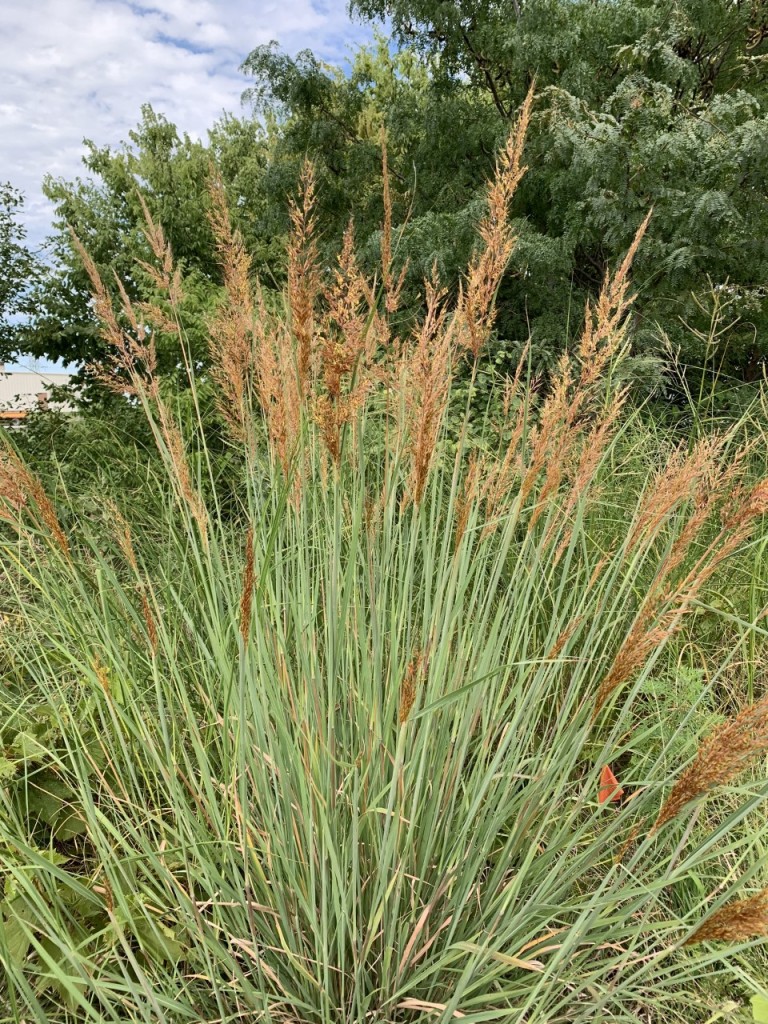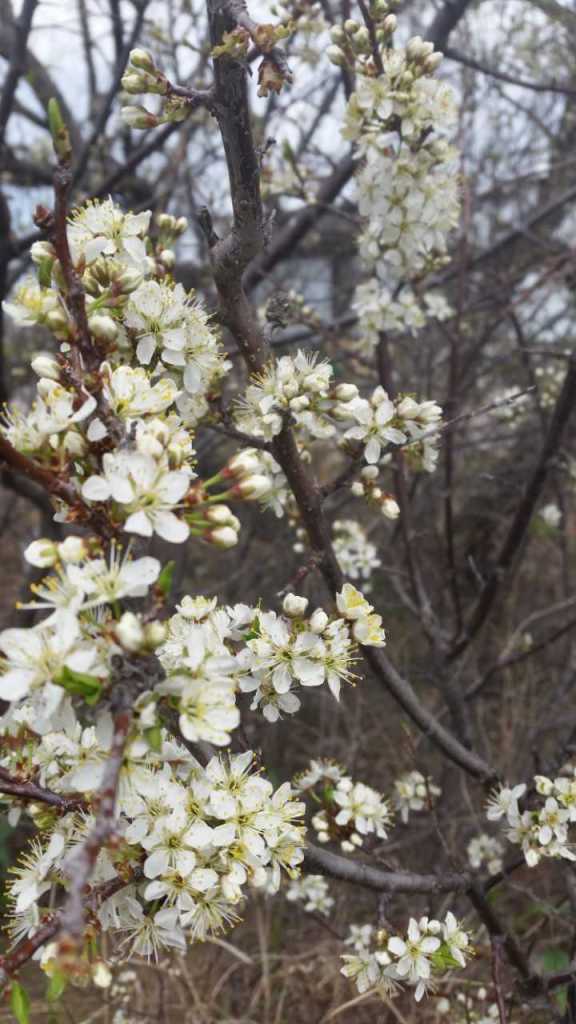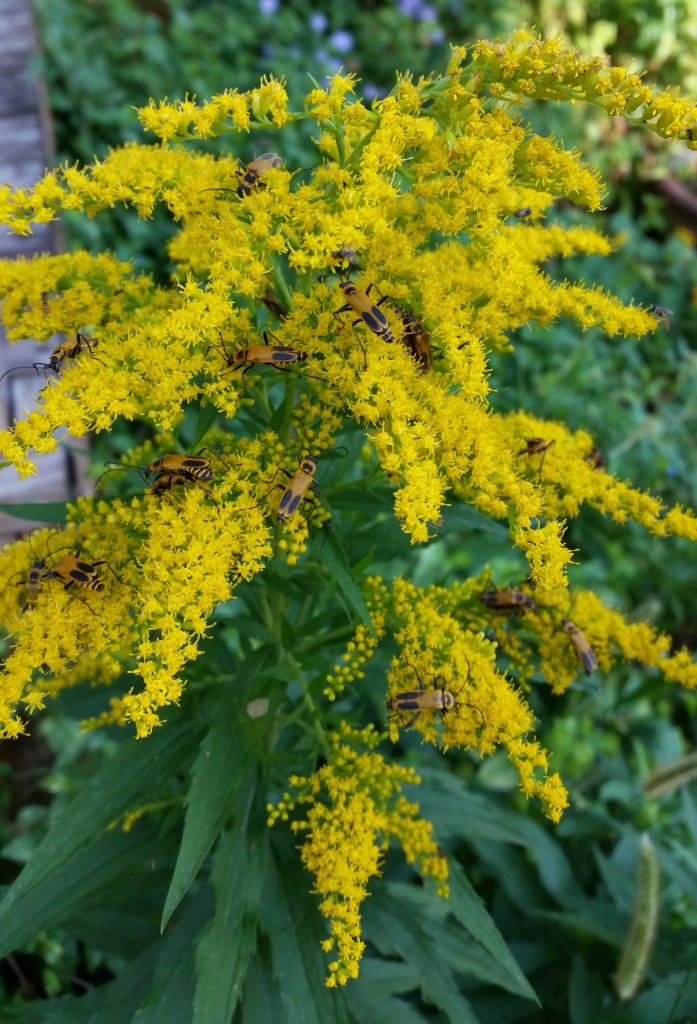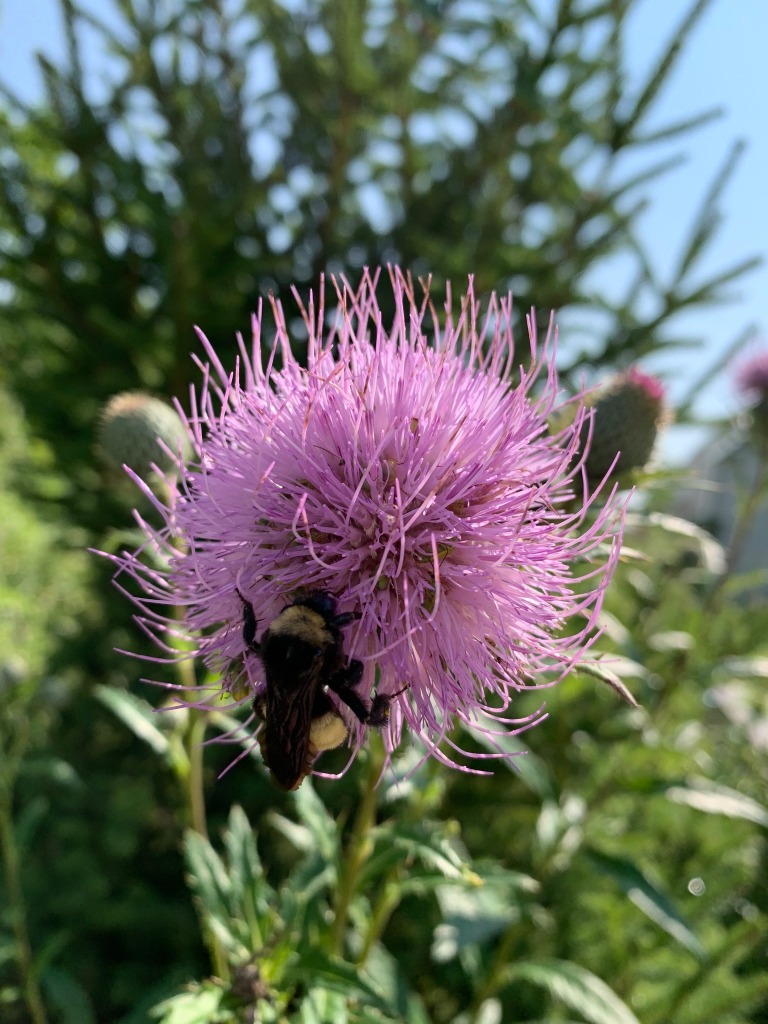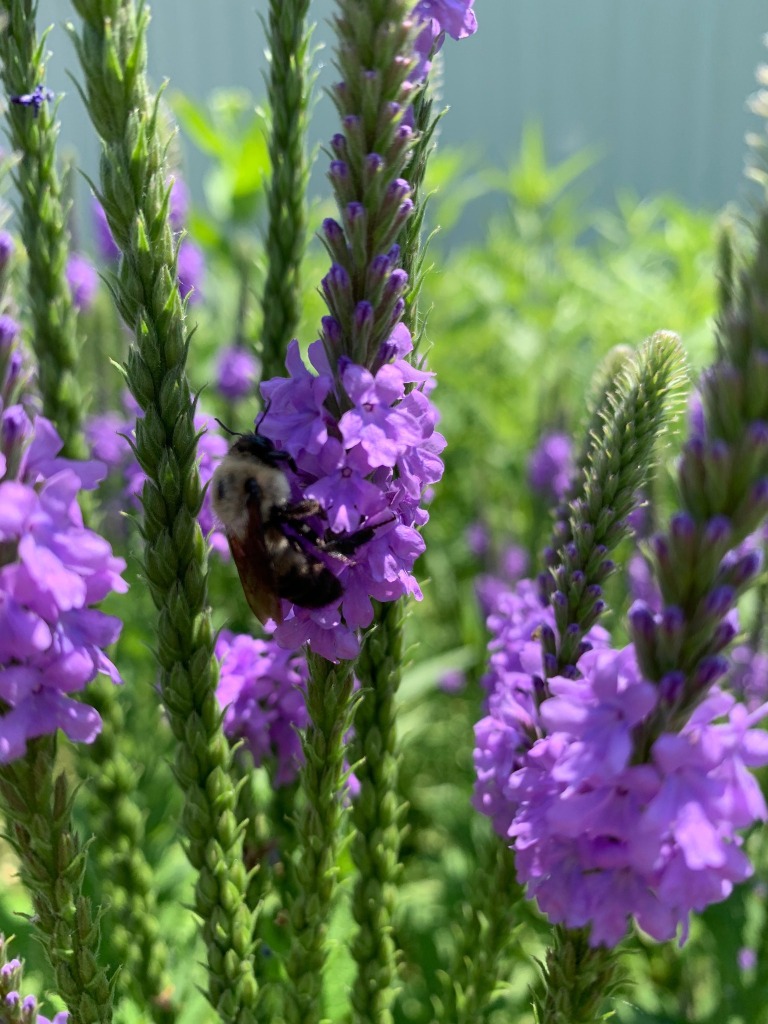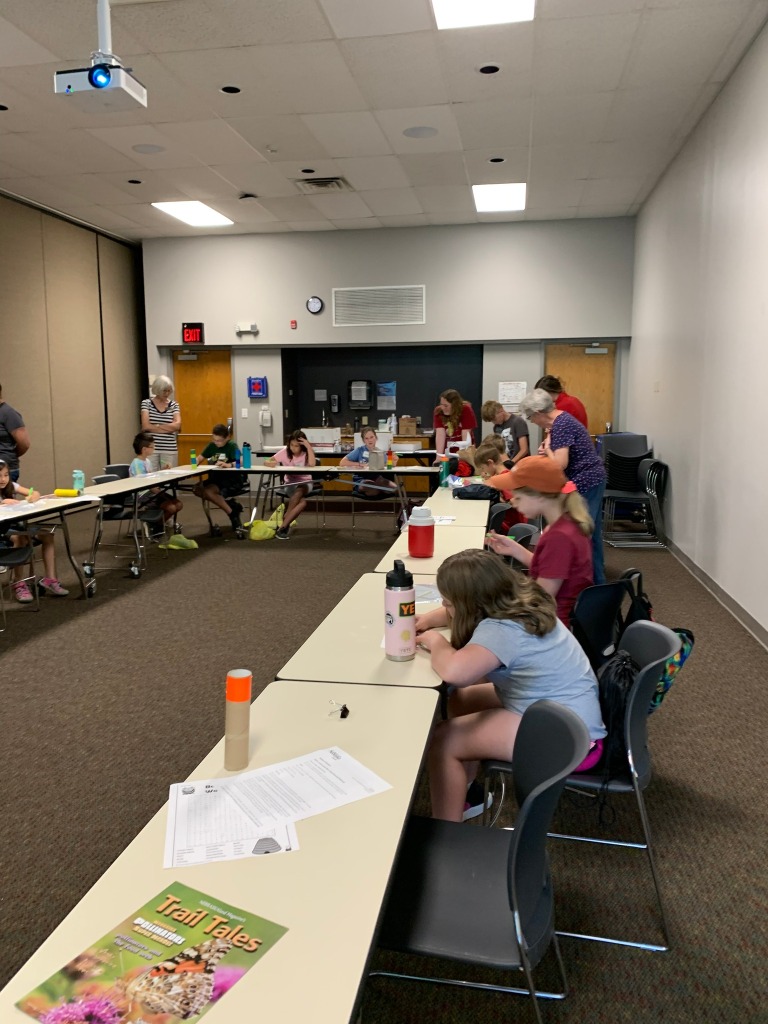This was a dry year in southeast Nebraska. Watering plants and keeping the water features full was a priority this year in the Cherry Creek Habitat.
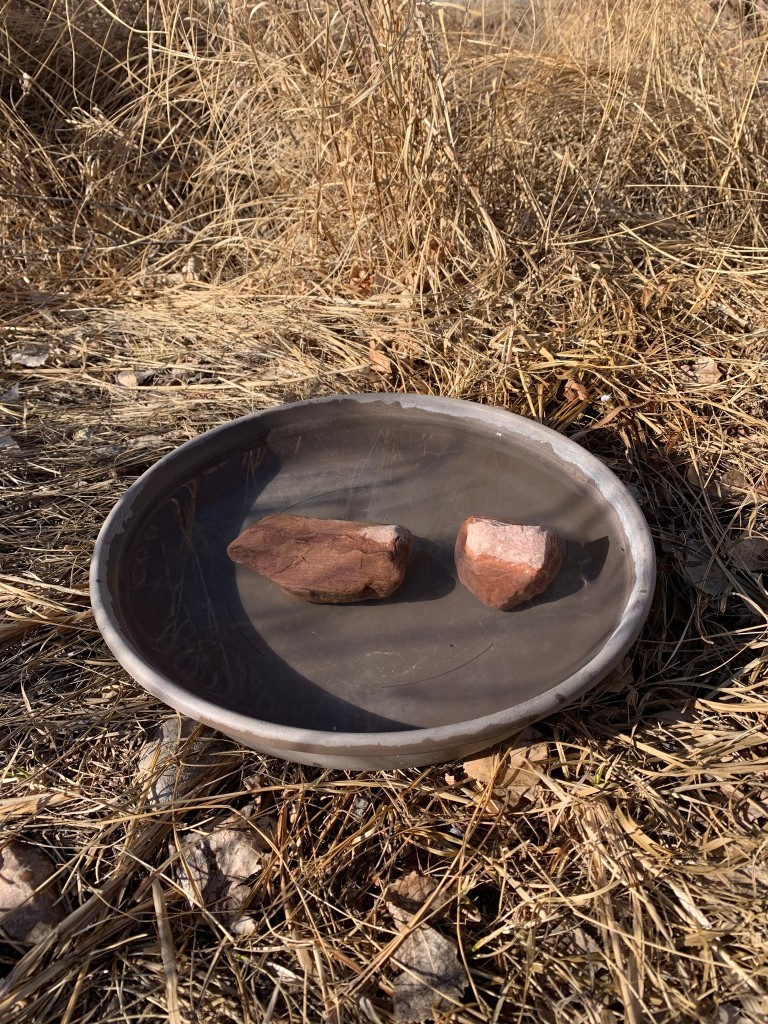
Looking at the data, we are on target to have more moisture that 2022. The University of Nebraska at Lincoln, Weather and Climate keeps monthly and annual precipitation totals (in inches) since 1887.
https://lincolnweather.unl.edu/data/monthly-precipitation.asp
Insect observations seem down this year. Saw very few Monarch butterflies and caterpillars. I observed this year:
leaf cutter bees (Megachile species)
bumble bees (Bombus species)
black swallowtail butterflies (Papilio polyxenes asterius)
painted lady butterflies (Vanessa cardui)
Chinese mantis (Tenodera sinensis)
Plants that bloomed and did well in the Cherry Creek Habitat this year include:
common milkweed (Asclepias syriaca)
butterfly milkweed (Asclepias tuberosa)
cup plant (Silphium perfoliatum)
partridge pea (Chamaecrista fasciculata)
sawtooth sunflower (Helianthus grosseserratus)
hoary vervain (Verbena stricta)
wild bergamot (Monarda fistulosa
tall thistle (Cirsium altissimum)
rosinweed (Silphium integrifolium)
chicory (Cichorium intybus)
brown-eyed Susan (Rudbeckia triloba)
pitcher’s sage (Salvia azurea)
Joe-pye weed (Eutrochium maculatum)
I am looking forward to a peaceful, restful winter and anticipating the first blooms of next year. What will 2024 bring?
Best holiday wishes, Mary Jane Frogge

